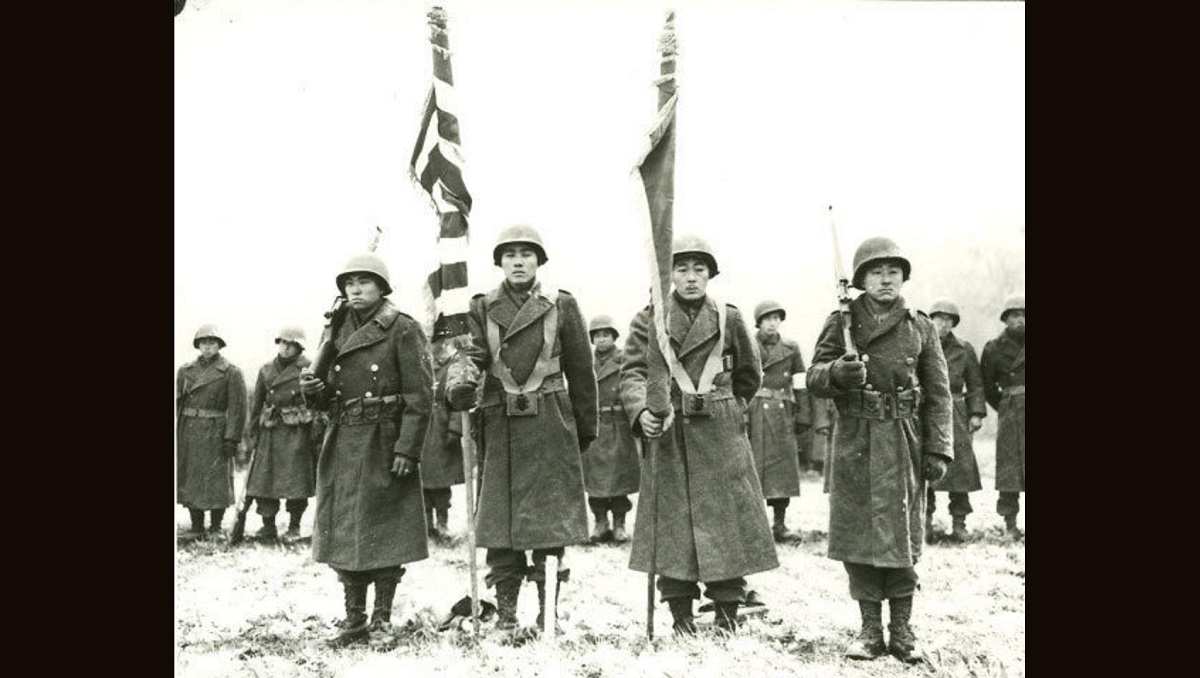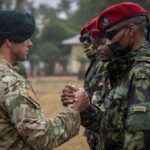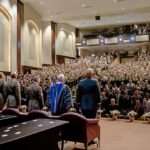
In February 1942, President Roosevelt signed Executive Order 9066, which forced 120,000 people of Japanese ancestry, approximately two-thirds of whom were American-born citizens, to abandon their homes and livelihood and live in internment camps.
Racism takes many forms, sometimes presenting itself inconspicuously. Last November, the Pew Research Center claimed that 78% of Asian American adults, even those who are U.S.-born, have been treated as a foreigner. That has been my own experience. I still recall one incident from about twenty years ago.
“No, I mean, where are you from?”
Apparently, the middle-aged lady did not want to know that I consider my hometown to be Mountain View, California. Since hundreds had asked me this question before, I politely responded, “My father is Caucasian, mostly Irish and Scottish ancestry. My mother came to the United States from Japan.”
“I knew it! Well, actually, I was going to guess that you were Filipino because you are so dark. But now that I know, I can tell you are Japanese because of your eyes. Anyway, I love your people’s food. I made stir fry for dinner last night.”
Although I appreciated the woman thinking my ambiguous mixed-Asian look could be Filipino (because the Filipino Americans in my extended family always throw the best parties), I could not help but feel uneasy. I thanked the well-meaning woman at the Naval Air Station Pensacola barbershop, dusted the fresh-cut hair off my flight suit, and returned to my room to study for my upcoming visual navigation flights. I sighed and wondered, “Even as an ensign wearing a large American flag on my shoulder, am I still not ‘American’ enough?” I am hardly the first Japanese-American service member to feel this way.
In February 1942, President Franklin D. Roosevelt signed Executive Order 9066, which forced 120,000 people of Japanese ancestry, approximately two-thirds of whom were American-born citizens, to abandon their homes and livelihood and live in internment camps. Lucky Japanese Americans were given a few days to sell their property before imprisonment. For others, the U.S. government froze their bank accounts, seized their assets, and immediately hauled them off to the desolate, barbed-wired camps thousands of miles from their homes. Most Japanese Americans lived in these camps for three years until Japan’s surrender in 1945.
Although Americans of German or Italian ancestry also faced discrimination during WWII, the ubiquitous racism faced by Japanese Americans proved comparatively vicious. Japanese women, infants, young children, and even U.S. combat veterans who lived on the West Coast were all hauled off to dusty or swampy camps in America’s interior. Overwhelmingly, U.S. officials filled internment camps with Japanese-American citizens with no charges against them and who could not file an appeal. Baseless claims of Japanese Americans aiding the Japanese empire fed existing xenophobia, expediting harsh measures. A 1980 Congressional study on the legacy of these camps found these imprisonments to be a “grave injustice” caused by “racial prejudice, war hysteria, and the failure of political leadership.” By relocating and incarcerating approximately 120,000 Japanese Americans, U.S. officials enforcing Executive Order 9066 imposed significant costs and humiliation on these people. Although the U.S. Congress paid $38M in reparations in 1948 and then $20,000 per surviving detainee in 1988, the estimated $400M in property losses and three years of incarceration still profoundly changed these Americans’ lives. Many lost all their possessions.
In Hawaii, where Japanese Americans were nearly a third of the entire population, Japanese Americans were not rounded up and forced to live in camps. However, they still faced racial discrimination, with all serving Japanese Americans being removed from their military units.
Despite losing their rights as American citizens, many Nisei (pronounced NEE-say) or second-generation Japanese American men wished to display their patriotism and fight for the United States. Approximately 33,000 Japanese Americans served during WWII. While banned from serving in the U.S. military until 1943, many Nisei volunteered to serve as soon as the opportunity arose. Over 6,000 Nisei, like Joe Ohno or Tom Sakamoto, provided precious intelligence analysis in the war effort against Japan by serving as translators in the Military Intelligence Service. However, most fought in the European theater as part of the 18,000 who served in the 442nd Regimental Combat Team (RCT) and the 100th Infantry Battalion (IB) (later incorporated into the 442nd RCT). When he activated the 442nd RCT a year after issuing Executive Order 9066, Roosevelt declared, “The principle on which this country was founded and by which it has always been governed is that Americanism is a matter of mind and heart; Americanism is not, and never was, a matter of race or ancestry.”
Just because the 442nd consisted of all Japanese American soldiers did not mean they were immediately cohesive; these Nisei still needed a robust and intelligent leader to unify them. Initially, the Hawaiians and the mainlanders who constituted the 442nd RCT had to overcome some cultural differences. The Hawaiians (or “Budda-heads,” as the mainlanders called them) were carefree, gregarious, and unaware of the internment camps. The mainlanders (or “Kotonks,” as the Hawaiians called them) were aloof, accused of being arrogant, and preoccupied with thinking about their incarcerated families. The Nisei of the 442nd served under a white commander, Colonel Charles Pence, who spent time with his soldiers and got to know them. He brought the Hawaiians to the Rohwer internment camp so they could empathize with their mainlander brother-in-arms and move past their name-calling. COL Pence’s leadership fostered trust and cohesion in the chain of command and among his soldiers. In the spirit of unity, the men of 442nd RCT made their motto, “Go for Broke,” a Hawaiian gambling term that means “to bet it all.”
American pride takes many forms, including combating racism.
These soldiers did, indeed, “Go for Broke,” making a noticeable difference in the European theater of war. After fighting fiercely in Italy, the 442nd RCT became the “go-to” regiment, as they were known for their fighting spirit. In 1944, the 442nd RCT was called upon for a challenging mission to save the “Lost Battalion.” After six days of intense combat in France’s Vosges Mountains, the 100th and 442nd RCT rescued the “Lost Battalion,” 275 Texan soldiers encircled by German forces. With a mixture of courage, a bayonet charge up “Suicide Hill,” a brilliant pincer maneuver, and combined arms fire, many Nisei such as Daniel K. Inouye, Barney Hajiro, Don Seki, and Frank Wada annihilated the enemy and saved the Texans. The act of heroism was recognized in 1962 by Governor John Connally of Texas, who made the 442nd RCT “honorary Texans,” a great honor given the pride Texans have in their state.
President Harry Truman told these Nisei soldiers in a 1946 White House Ceremony for the 100th IB and 442nd RCT, “You not only fought the enemy but prejudice and you won.” Although these soldiers won over many racists with their heroic actions, a lot of work remains as Asian Americans still face prejudices. Today, xenophobia of Asian Americans is not nearly as rampant, but racism still exists. In 2022, the STAATUS (Social Tracking of Asian Americans in the United States) Index found that 30% of Americans believe that Asian Americans are more loyal to their “country of origin” than to the United States. Further, as my colleague Dr. Allison Abbe writes, Asian Americans continue to be underrepresented in essential national security roles.
For combat actions in Italy, France, and Germany, the U.S. Army notes that the 442nd RCT is the most decorated unit for its size and length of service in U.S. military history. These Japanese Americans sacrificed for each other and the United States. In total, the 442nd RCT earned 7 Presidential Unit Citations, 21 Medals of Honor, 29 Distinguished Service Crosses, 560 Silver Stars, 4,000 Bronze Stars, 22 Legion of Merit Medals, 15 Soldier’s Medals, and over 4,000 Purple Hearts. They also fought against prejudice, with no medals to show but demonstrable success. In winning on and off the battlefield, they became a “go-to” unit that exemplified success in combat. In examining how the 442nd became the “go-to” unit, David Bonner brilliantly outlines factors such as group cohesion, fear of failure, and outstanding leadership as factors of success for the Nisei soldier. However, his scholarly work overlooks one answer: the matter of “mind and heart” President Roosevelt referred to when he founded the unit. Success and a fighting spirit came from what many may call a “good old-fashioned love” of our American nation. The legacy left by the heroes of the 442nd RCT reminds me that actions are more powerful than words. So, I also choose to act.
I first heard about the 442nd RCT from a 1980s San Francisco Bay Area television commercial, “I am proud to be a Japanese American.” The cheesy commercial briefly narrates an overview of the history of Japanese Americans and then mentions the valuable careers Japanese Americans work in today, like athletes, doctors, and cinematographers. As an adventurous little Japanese-American kid, I thought, forget those jobs, “I want to be one of those highly decorated soldiers!” So, I read about the soldiers in the 442nd RCT and internalized their struggle and legacy. The 1986 movie Top Gun inspired me to fly for the U.S. Navy, and my pride in being a Japanese-American service member never left me. As the 442nd RCT fought for what they believed in, I also strive to do so. Today, I serve on the U.S. Army War College faculty, where I can tell the story of the faithful American soldiers who look like me.
American pride takes many forms, including combating racism. I believe that Japanese Americans—and Asian Americans more broadly—should acknowledge their race and tell their stories. Often seen as the “model minority,” which unconsciously silences us and perniciously strips us of our diversity, Asian American need to embrace being seen. Two recently retired Japanese American four-star officers, General Paul Nakasone and Admiral Harry Harris, set the example.
Combatting prejudice is something all national security professionals can do. Two of my colleagues, Professor Chuck Allen and Dr. John Nagl, one Black and one white, wrote a fantastic piece about Black Soldiers. They teach a popular elective that tells the stories of the Black American Soldier. Their work exemplifies both being seen and being an ally. Educating senior leaders acknowledges our diverse American stories and fosters inclusion. In the high-stakes business of defense, we need to recruit and retain the best Americans of any race. You never know who the next “honorary Texans” may be.
Michael Posey is an active-duty Naval Flight Officer and a graduate of the Naval Fighter Weapons School Air Intercept Controller (TOPGUN AIC) course. He currently serves on the U.S. Army War College faculty and is a member of the Japanese American Veterans Association. He is not an honorary Texan (yet).
The views expressed in this article are those of the author and do not necessarily reflect those of the U.S. Army War College, the U.S. Army, the U.S. Navy or the Department of Defense.
Photo Description: The Color Guard of the 442nd Regimental Combat Team stands at attention while citations are read following the fierce fighting in the Vosges area of France, Nov. 12, 1944.
Photo Credit: Army photo





Inclusive and a well-contextualized history at its finest. Much appreciated. Would be interested to learn the author’s take on the writings of Viet Thanh Nguyen, particularly “Nothing Ever Dies: Vietnam and the Memory of War”.
Nelson, thank you for your kind words and insightful question! In researching my article, I came across Nguyen’s 2020 “model minority” piece in Time https://time.com/5859206/anti-asian-racism-america/ and almost cited it as my “model minority” reference. However, I thought Duong’s NPR piece on the “model minority” was more congruent with my article, although both share similar insights. I have not read “Nothing Ever Dies,” but I will add it to the stack of books on my night shelf. If I may, I recommend “Sigh Gone” by Phuc Tran- https://www.amazon.com/Sigh-Gone-Misfits-Memoir-Great/dp/1250194717. Tran is a Vietnamese immigrant and feels like an outsider in small-town Carlisle, PA but finds his way. It’s a fun yet subtly powerful book.
Nelson, the long stack of books remains on my nightstand, but the books are all different from those that rested there in March. I finished “Nothing Ever Dies” and found Nguyen’s work thought-provoking and powerful. His book speaks to historical perspectives, Pyrrihic victories, and human suffering and how we examine our own (and others’) truths. Thank you for recommending the book!
Question: In which of the following international environments would/could U.S./Western efforts at “combating prejudice” be easiest to achieve:
a. In the Old Cold War international environment; wherein, assimilation might have been seen by the U.S./the West as the order of the day; this, so as to allow that the U.S./the West might “forge national peoples that could meet the external Communist enemy with a united front, thereby denying the Communist enemy with an opportunity to exploit potentially dangerous rifts within the Nations”? Or:
b. In the post-Cold War international environment; wherein, integration/multiculturalism might be being seen by the U.S./the West as the order of the day; this, “for all the advantages that this/these approaches could/can bring to American businesses in their international transactions?”
(As to the quoted items above, see beginning at about the middle of Page 703 — and on to the top of Page 704 — of the Catholic University of America, Columbus School of Law paper “Moral Communities or a Market State: The Supreme Court’s Vision of the Police Power in the Age of Globalization” by Antonio F. Perez and Robert J. Delahunty.)
In the concluding paragraph of our article above, the author points to, and links, a suggested relevant and related article by Professor Chuck Allen and Dr. John Nagl.
In this such referenced and linked article (for example, see the second, third and fourth paragraphs thereof), such things as “diversity, equity and inclusion” seem to figure prominently (and, thus by proper extension, such things as “integration” and “multiculturalism”?).
If this indeed is the case, then does this not support a suggestion that national security, post-the Cold War, came to be seen:
a. Less from a — “national” and “assimilation” — “forge a national people that can meet the external enemy with a united front, thereby denying this external enemy with an opportunity to exploit potentially dangerous rifts within the Nation” point of view? And
b. More from an — “international” and “integration” — “for all the advantages that this/these approaches can bring to American businesses in their international transactions” point of view?
If this indeed is the case, then to ask again: In which of these such national security scenarios was/is “combating prejudice” most likely to see most significant progress? (Or, reversal?)
I recently visited the Japanese Cultural Center in Honolulu. It has significant presentations relating to the internment of many Hawaiian-Japanese AMERICANS. Unlike folks on the mainland, many were not interned because of the labor supply impact on the islands. However, the father of a long term nesei friend of mine, originally from Kauai, was interned and sent to various camps on the mainland. The Japanese Cultural Center has an interesting online database which profiles individuals caught in the web of hysteria.
Peter, very interesting. I must check out the Japanese Cultural Center the next time I am in Honolulu. I have spent some time at the Japanese American National Museum and the Go For Broke NEC in Little Tokyo (Los Angeles) but have never been to the JCC on Oahu. Thanks for the tip.
Great article, Michael! Thank you for sharing this.
Thank you, Allison! Your kind words mean a lot to me!